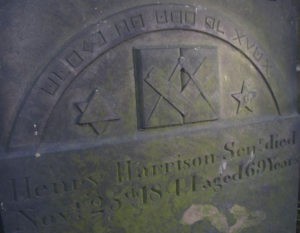Klaus Schmeh has just published a page on a previously unknown “Eliza” Masonic grave slab somewhere in Ohio, courtesy of Craig Bauer (Editor of Cryptologia, and who has a book on unsolved ciphers coming out next year).
Klaus’s commenters quickly worked out that it was actually the grave of Eliza Biehl (born 27th May 1862, died 2nd September 1915) buried in the Amboy Township Cemetery in Fulton, OH. It looks like this:
Klaus’s commenters quickly pointed out that the “John 3 – 16” on the left almost certainly refers to John 3:16, “For God so loved the world that he gave his one and only Son, that whoever believes in him shall not perish but have eternal life“.
The right hand side is a Masonic pigpen cipher (obviously), but with a twist: it is actually enciphered from right-to-left, and so reads:
NROB
72-YAM
2681
———–
DEID
2-TPES
5191
It was actually a very nice piece of tag-team code-breaking, well done to everyone involved. 🙂
I’ve mentioned one particular Masonic gravestone back in 2008: but it turns out there are plenty of others out there, a few of which Klaus covers in this post on his site.
But here’s one he missed: that of John Farmer Dakin:-
Here’s the plaintext if you’re too bone idle to work it out for yourself (it’s not hard, go on):
[—TRUSTINGODFOR—YOURSALVATION—]
Full bonus marks if you notice why this might give computer solvers a minor headache. 🙂
There are also various acrostic Masonic grave markings that occasionally turn up, such as FNDOZBTKC (which stands for “Fear Not, Daughter of Zion: Behold, The King Cometh”), and AHRHPCASDE (“And He reached her parched corn, and she did eat”).
Two More Masonic Gravestones…
But the real meat-and-two-veg of cryptic Masonic gravestones are pigpen cipher inscriptions: and so here are two more for you.
The first was from Dalkeith in Midlothian, and was cracked by amateur code-breaker Stuart Morrison. However, only really the headline of the story is on the web (i.e. no solution) and the image of the ciphertext isn’t really good enough to work with (in my opinion).
If someone has access to a better quality image of this, that would be a good help. 🙂
And finally, a Freemason called Henry Harrison had some pigpen on his gravestone.
Can you crack either of these? 🙂








